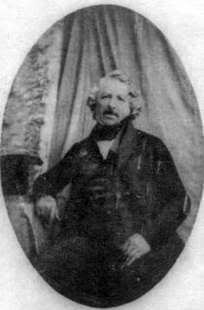
Photography ! None other than Louis Jacques Mande Daguerre is the man who in the 1830s managed to find practical photography.
Daguerre was born in 1787 in the town of Cormeilles in northern France. When he was younger artists. In their mid-thirties he designed a "diograma", the line painting stunning scenery good, performed with the aid of light effects. While he worked on the job, he became interested in the development of a mechanism to automatically re-create a view of the world without using brushes or paint. In other words: the camera!
The first level design tools that can function camera does not work. In 1827 he met Joseph Nicéphore Niepce who are also trying (and far more successfully) to create a camera. Two years later they became joint venture. Niepce died in 1833, but Daguerre persevere continue his experiments. By the year 1837 he has managed to develop a practical system of photography called "daguerreotype."
Daguerre in 1839 to tell the public openly without patent. In return, the French government presented a lifetime pension to both Daguerre and Niepce son. The announcement of the discovery of Daguerre, caused the population. Daguerre was a hero then, sprinkled with various honors, while the "daguerreotype" quickly evolved into what is used by the public. Daguerre himself to retire. He died in 1851 in his hometown near Paris.
There was a lot of discovery that is so widely used technologies such as photography laymen. He is used in almost every field of scientific inquiry. So also in the field of industrial and military. Means is vital among the common people, fun hobby for millions of people. Photography took part in the dissemination of information (or deception to trick the people through false information), in education, journalism and advertising. Since photography is able to quickly remind people of his past, he became a means souvenirs and mementos widespread. Cinematography, of course, is the next development that have important meaning-besides serving and is a means of entertainment that can not be ignored-are also widely used Saina equivalent picture "silent."
There is no scientific discovery made by a person alone without any guidance from previous people as Daguerre. "Camera obscura" (a tool similar to a camera but without the film) have found the eight centuries before Daguerre. In the 16th century, Girolamo Cardano made strides to put the lens in front of the "camera obscura" open. This is an important step towards the birth of the modern camera. But because the image produced is not durable at all, it is hard to be a photography. Other newbies invention discovered in 1727 by Johann Schulze discovered that silver salts are extremely sensitive to light. Although he used this discovery to create temporary images, Schulze had no idea how to properly pass on the idea.
Preceded close to anything that was successfully done Niepce Daguerre who later became a partner Daguerre. Around the year 1829 Niepce found that thick black rocks of Judea, a type of asphalt, is very sensitive to light. By combining the light-sensitive objects "camera obscura," Niepce managed to create the world's first photo (the one that dijepretnya in 1826 still exists today). On that basis, some people consider Niepce who deserve to be regarded as the inventor of photography. But Niepce photography system entirely impractical because it requires no less than eight hours for the uptake and it was just to make the picture Guram.
Official Camera Daguerre who diprodusir-law, Alphonse Girous, stamp which reads: "Without the signature M. M. Daguerre and pins Giroux, is not guaranteed. "Because it has a practical sense of excess.
In Daguerre method, the images are recorded on the sheet plated "silver iodide". Retrieval time it takes between 15-20 minutes is sufficient nuisance even carried it as heavy, useless anyway. Two years after Daguerre demonstrated his creation in public, people suggested improvements: the addition of "liquid silver" to "silver iodide" that is sensitive to light. This small change had the effect of greatly reducing the time required for a photo shoot, because it has a practical sense of excess.
In 1839, after Daguerre publicly findings photography, William Henry Talbot, a British scientist, told also that he has developed other methods of photography, by way of printing a negative, as people do today. Interesting to note, Talbot is already memprodusir a snapshot in 1835, two years before the release of the model Daguerre. Talbot, who was also involved in various projects, not hastily pass on experimental photography. If this is done, maybe once she could memprodusir tools that commercial portraiture before Daguerre did, and could be regarded as the inventor of photography.
The years after Daguerre and Talbot, straight people do various improvements: the wet sheets, the sheets dry, modern film, color film, movie theaters, Polaroid and xerography. Although many people are involved in the development of photography, I think Louis Daguerre was the person who most give their contributions. There is no system that should be used before Daguerre and the system he developed the most practical and most widely accepted. Moreover, broadcasting a wide range of inventions is a thrust for improvements in the next. It is true, of photography as we know it today is much different from the system Daguerre, but although eg no improvement whatsoever, yet what made Daguerre was able to be utilized.




0 komentar:
Post a Comment